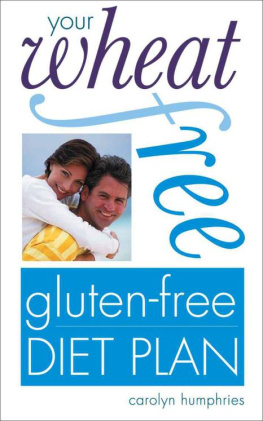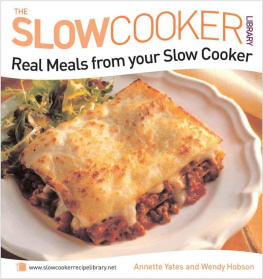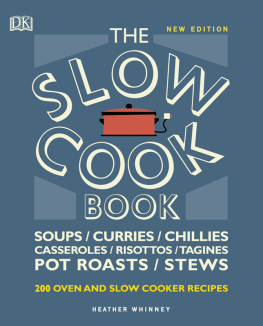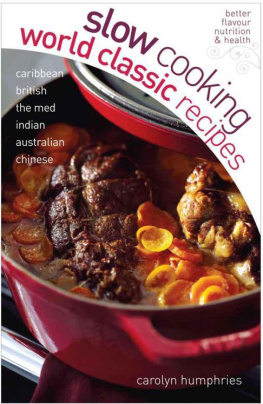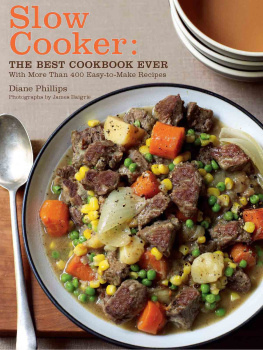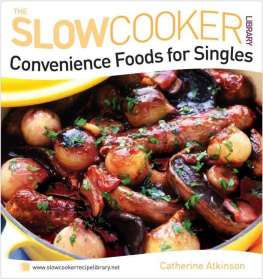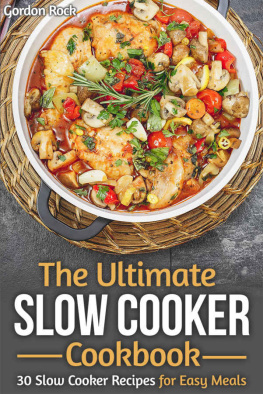
Table of Contents
Introduction
Slow cooking in a crock pot is a wonderful way of ensuring you come home to a sumptuous meal after a busy day. But, quite often, you're expected to do a fair bit of preparation in advance. I don't know about you, but getting up at the crack of dawn to fry-off onions and meat or make an elaborate sauce to pour over the raw ingredients doesn't fill me with enthusiasm. Here is the perfect answer! With all these recipes, there is virtually no work to do beforehand apart from mixing a few things together or, on rare occasions, a small amount of trimming. With a little help from well-chosen convenience foods, for the most part you simply put the ingredients into the pot, switch on and go. Even for some of the dishes that cook more quickly - like fish, for instance - you don't always want to be fiddling around. You just want to pop the ingredients in the cooker, go and have a bath or watch your favourite programme, then dish up. No messing, no fiddling and certainly no special skills required!
Purists will argue that you should be chopping your own onions - in fact, preparing all your vegetables from scratch, making your own pastry (paste) and grating your own cheese. From a financial point of view they are right; it's obviously cheaper to do it that way, but if you balance that against time and effort (and particularly if you don't enjoy doing it), then you can argue it is money well spent.
This has been an eye-opening experience for me. I'm used to preparing everything myself - because I love cooking - but I have been very pleasantly surprised at the quality of the convenience foods I've used and the delicious results I've achieved!
This is the ideal cookbook for non-cooks. Apart from sometimes having to cook some rice, pasta or potatoes, warm some bread or toss a salad before serving, there is little else to be done - and even the effort of doing that can be minimised. With my handy guide to speedy accompaniments, you'll be able to dish up fabulous, nutritious, perfectly balanced meals while hardly lifting a finger!
Using Your Slow Cooker
- Stand the electric base on a level, heat-resistant surface. Do not use on the floor.
- Do not preheat your pot unless your manufacturer's instructions tell you to.
- Put the ingredients in the ceramic crock pot, then put the pot in the base.
- Cover with the lid and select the cooking temperature - High, Medium (if you have it) or Low. Note that some smaller cookers cook quite quickly on High, so you may find that cooking on the Low setting is preferable, particularly if you are not going to be there to keep an eye on things or are cooking only a smallish quantity.
- Cook for the recommended time. If there is a range of time, check after the shorter time given; this will usually be sufficient for most cookers but the food won't spoil if it is cooked for the extra time, particularly if cooked on Low.
- Taste, stir and re-season, if necessary.
- Switch off the cooker and remove the crock pot using oven gloves.
Cooking Tips for the Slow Cooker
- Any of your usual soup, stew or casserole recipes can be cooked in your slow cooker. However, liquid doesn't evaporate as much as it does when cooking conventionally, so cut down the liquid content by 30-50 per cent (not necessary for soups) or increase the flour or cornflour (cornstarch) thickener by a third. You can always add a little extra liquid at the end.
- Use a crock pot suitable for the quantity of food you want to cook. It should be at least full for the best results (but for foods like ribs or chicken wings, a single layer is fine if you have a large pot). Don't use a small pot and pack the food in tightly to the top or the heat won't be able to penetrate the food - just as when cooking conventionally. But, conversely, don't have too little either. For instance, one chop in the pot will overcook unless the pot is filled up to at least a third with liquid. So, if cooking for one, you may need to double the amount of liquid to be on the safe side.
- When cooking meat and root vegetables together, put the vegetables towards the bottom of the pot as they will take longer to cook than the meat.
- Do not cook too large a joint or bird in the crock pot. It should fit in the pot with at least a 2.5 cm/1 in headspace. If unsure, cut the joint or bird in half before cooking. (It will then cook quicker, as when cooking conventionally.)
- When cooking soups, make sure there is a 5 cm/2 in headspace in the pot to allow for bubbling during cooking.
- Most foods can be cooked on High or Low (or Medium or Auto-cook if you have it). Fish, rice and egg-based dishes, however, are best cooked on Low.
- If you are planning to be out all day, opt for cooking on Low, then there is little or no chance of the meal ruining even if you are late (particularly if you don't have a programmable slow cooker).
- Do not open the lid unnecessarily during cooking as heat will be lost. If you remove it to add extra ingredients or to stir more than once or twice, you may need to add an extra 10 minutes at the end (but in most cases there is sufficient cooking time allowed in the recipes for this).
- Should there be too much liquid at the end of cooking, strain it into a saucepan and boil rapidly for several minutes until reduced to the quantity and consistency you require, or thicken it with a little flour or cornflour (cornstarch) blended to a smooth paste with a little water and cook for 1 minute, stirring.
- When food is cooked, the cooker can be switched off and left for up to 30 minutes. The food will be still piping hot. If you need to keep food hot for longer, switch to Low. (This isn't suitable for egg-based or rice dishes.)
- If you are unsure whether a joint of meat or a bird is cooked through, insert a meat thermometer into the thickest part of the joint at the end of cooking. The temperature should reach a minimum of 63C/145F for rare beef to a maximum of 71C/165F for chicken.
- You can use the crock pot to keep hot drinks (such as mulled wine) warm, or for hot dips or fondues. Keep the pot on the Low setting.
- Frozen vegetables and fish can be cooked from frozen.
Looking After Your Slow Cooker
- Do not put the crock pot or the lid in the oven, freezer or microwave, on the hob or under the grill (broiler).
- Do not plunge the hot pot into cold water after cooking because it may crack.
- Do not leave the whole pot soaking in water as the base is unglazed and porous so will absorb the water. You may, however, leave water in the pot to soak it before washing.
- Do not preheat the cooker before adding the ingredients (unless your manufacturer's instructions tell you to).
- Do not use the slow cooker to reheat food.
- Do not leave uncooked food in the slow cooker when it is not switched on, so never put it in there overnight ready to switch on in the morning. Store the ingredients in the fridge.
- Do not use abrasive cleaners on the crock pot - but it will be dishwasher safe.
- Do not immerse the electric base in water; simply unplug it and wipe it clean with a damp cloth.
Cooking Times
- Some crock pots now have three settings, but others have only two. I have cooked most foods on High or Low as they will be relevant to all. Use Medium or Low for any of them, if you prefer, and adjust the times accordingly. However, please remember that when cooking fish, rice and eggs you will almost always need to use Low.
Next page
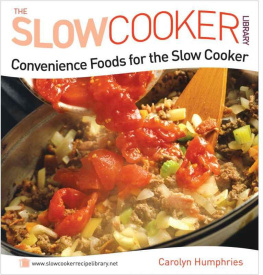
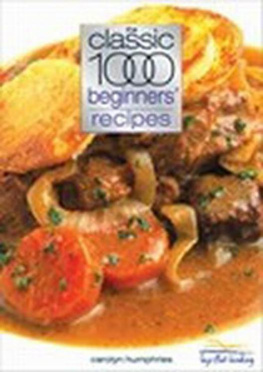
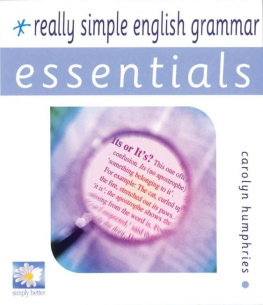
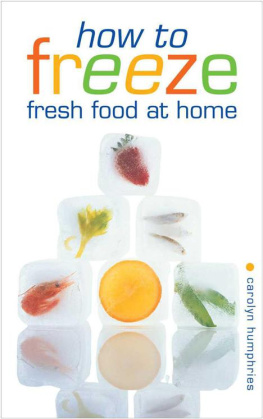
![Humphries - The low carb long term lifestyle : [with a twist of Mediterranean to add zest to your eating]](/uploads/posts/book/104760/thumbs/humphries-the-low-carb-long-term-lifestyle.jpg)
